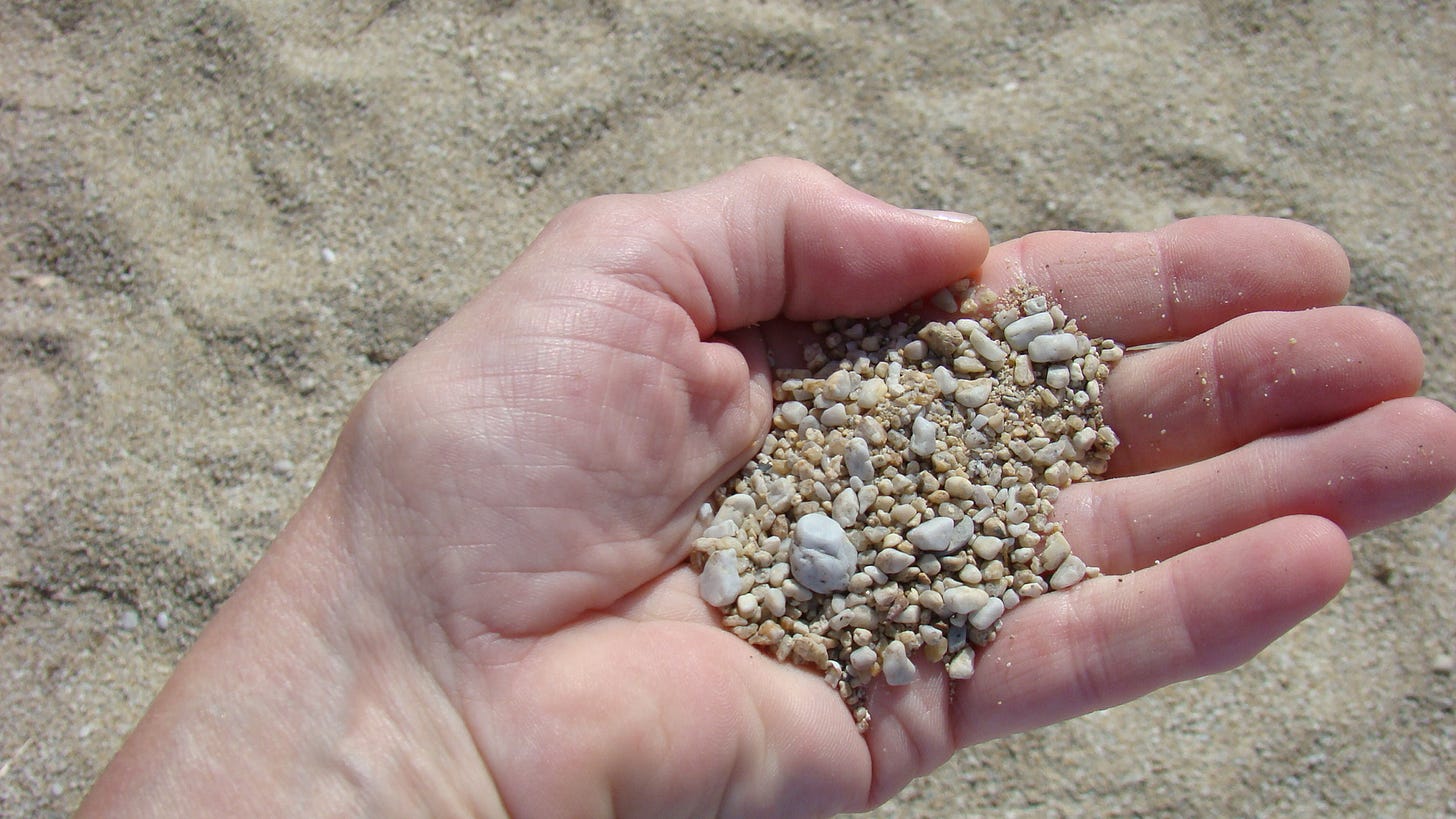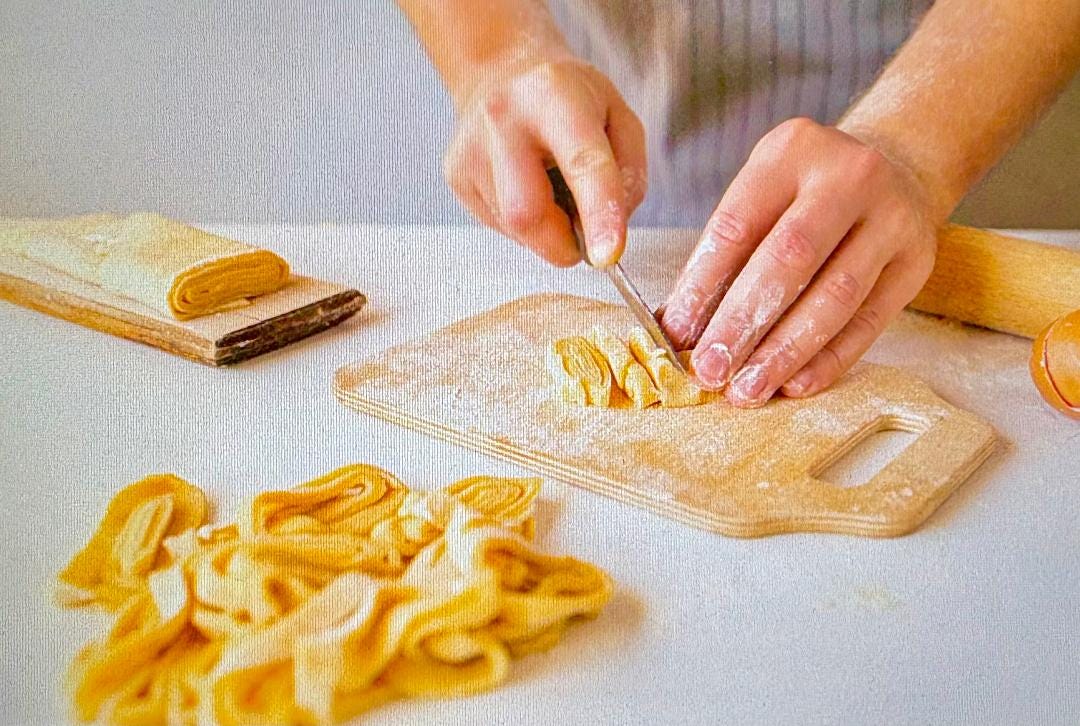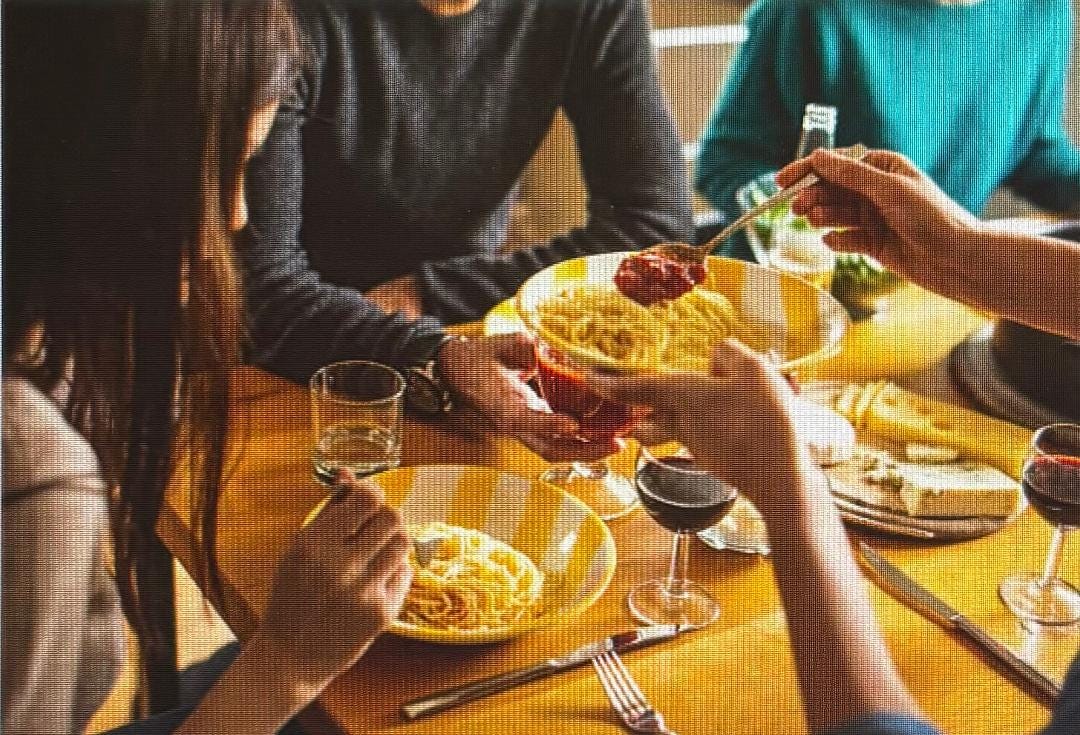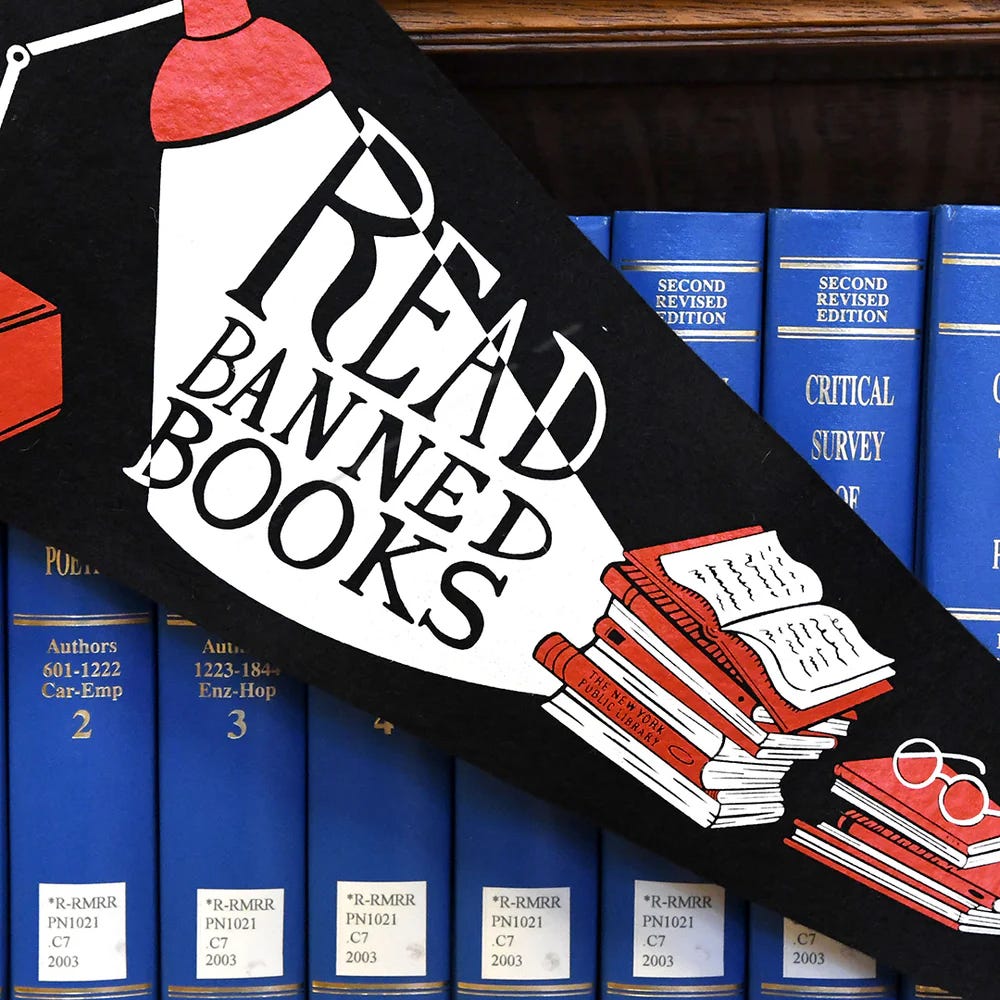QUIDDITY 93
It Became More Than That; Meanderings, Hypatia's Bookroom
It Became More than That
From the time she was 15 until her passing, writing was an ever-present influencer in Leah Napolin’s life. Writing provided her with the platform to observe and comment on the events and people that were consequential in her world, - from the minute to the universal, from YENTL to THE DOGS OF PRYPIAT. Future issues of QUIDDITY will provide you with the opportunity to become familiar with some of her insights. **********
Babes Behind Bars
by Leah Napolin
Part 2
(Part 1 ends with Leah at the gate of the Ohio Reformatory for Women (ORW) in the early 1970’s ready to begin her volunteer work.)
So, here I was at Marysville, having offered to start a program in creative writing and readings from world literature. In the retelling of this experience, there are too many wild, improbable, funny and disturbing nuances about these students of mine to begin to do justice to them: their struggle to become real people, or to stay real people, or their flight from authenticity altogether. Into that struggle enter such factors of prison life as deadening routines, prison personnel whose backgrounds and training sometimes ill-equip them for their jobs, loneliness and estrangement from parents, husbands, lovers and children, constant surveillance, the unspoken assumption that female prisoners are irresponsible children, and finally, the politics and intrigues of inmate society itself, reflective of life on the street with its loners and joiners, its “family” structure—a tissue of blind loyalties and unforgiving rivalries.
The ones who come to my class range in age from 18 to 60. Some are adolescents, sent up for possession of narcotics or shoplifting. Some are older women, habitual offenders who are in for crimes such as forgery, armed robbery, numbers and prostitution. The ones convicted of homicide, unlike those in the male prison population, will most probably never murder again. Recidivism is rare among women convicted of this crime. They are one-time offenders, themselves victims of that silent, unseen epidemic of domestic abuse. Yet, their sentences are the harshest of all.
Their backgrounds range from wealthy suburban to rural poor to inner-city disadvantaged. Once here, you discover how impossible it is to retain any of the old, stereotyped notions about what sorts of people get sent to prison. The answer is: all sorts. My students include nurses, secretaries, teachers, and even a previous World Champion baton twirler, Junior Division!
Many of them are bitter. They will not hesitate to drive you up against the wall, figuratively speaking, if you show any sign of uncertainty or weakness. They can be bored, hostile, or totally non-affective. Yet always implicit in their moods, which change with swiftness and unpredictability, is the challenge to you to reach them.
Many of them seek refuge in the simple pieties of their childhoods or in the practices of orthodox religion (membership in the Suuni Muslim sect is currently on the rise among black inmates.) But the prevailing attitude seems to be one of stoic acceptance. “I did my crime, I’m doing my time,” is the common refrain.
They spend their days working in the laundry or in the kitchen or doing clerical jobs in the offices or going to classes at the fully-staffed school on the premises which grants high-school equivalency diplomas. In the evenings they have their choice of chapel, bingo, sports, gospel singing, charm classes, or Toastmasters’ Club (poise and leadership, I suppose, for the future clubwomen of America!) Resident social workers run drug clinics. In addition, there are occasional career courses available—key punch operation or beautician training, to name two. It seems a pitifully limited number of options to offer people who are on the make for a better life.
But, if at times they appear bored, hostile, or withdrawn, they can also be touching, lively, and hilariously funny. Imagine students who respond to Voltaire as Terri did by crying, “Candide, you dude—wise up!”
They had no trouble at all with the tragedies of ancient Greece in which, as the critic John Jones puts it, “...to be sure that your hands are clean is to convict yourself of Hubris.” They loved Socrates and had fierce discussions about the duty of the individual to the State. Reading Camus’ novel The Stranger they began to conceptualize things about their own lives that they hadn’t been in touch with before.
The ones who are avid readers far surpass anything you’re likely to find elsewhere. Betty finished not just her reading assignment but everything else in the book, from cover to cover. The next week, in class, displaying nearly encyclopedic knowledge of the author, she explained modestly, “Hey, I’m tripping on this stuff!”
It didn’t take me long to come to the conclusion that my regular students at the university, too often passive and undemonstrative in class, act as though they’re in prison, while my students in prison, with their intellectual curiosity and overwhelming sense of life (deprivation having sharpened the latter) act as though they’re free!
What still bothers me is that some form of tangible reward like college credit is not available to these women for what we’re doing together. Perhaps someday soon it will be, with the cooperation of enlightened legislators and penologists like Martha Elizabeth Wheeler, superintendent at Marysville.
Perhaps someday soon, according to a rumor going around, Marysville will be phased out altogether, the first step in breaking down the state prison system into a series of local facilities so that inmates can be near their families and can plug into the guidance, educational and vocational resources of urban centers.
In the meantime, the long drives out to Marysville, but not alone anymore. Friends have joined the effort, and I’m sure that in time others will be recruited to carry on and expand the work. Hopefully, the gifts we bring the women of Marysville will have more substance than the ones that were so hungrily trampled underfoot that night long ago. These should be gifts of communication, understanding, self-discovery and self-respect—the same tools that will free us, too. & (Note: Some of Leah’s insights have come to pass. Others lie ready for much needed revival. In Captain Picard’s words, “Make it so.”)
###
MEANDERINGS: “My Pasta Family”
PART 1: Chef Boyardee is Not Italian
My chosen “Cabbage family” and “Ice Cream family” became less and less integral parts of my life once I entered high school and became more acquainted with a world outside of my Fleury Way neighborhood. But, my designating “chosen families” did not end.
Each weekday morning from September through May of my freshman year, I walked the seven blocks to catch a streetcar that took me to the gothic doors of my all-girls Catholic high school. It was a half hour ride to Oakland, another part of Pittsburgh, and to a universe that introduced me to over four hundred ways to be different from my friends and families at home.
One of those ways was becoming friends with Donna, an Oakland girl who introduced me to what it meant to be part of a large Italian family, my very first Italian friend and family. Before this, Irish was my center.
There were 100 girls in my class, and everyone of us looked the same dressed in our blue jumpers and white cotton blouses climbing the circular staircase in military synch to the main hall. Looking so very much alike was supposed to diminish feelings that you were better/less than anyone else or different. But, it was not possible when it came to lunch. We all had lunch together at the same time, and since there was no cafeteria, we brought our own. We didn’t have backpacks in those days, we improvised how we carried our sandwiches and chips or cookies to shared, long tables in the gym. Among my usual “meal mates” was my Math and French class “amie” Donna. She was one of the very few who had something other than the usual. Each day, Donna would sit and reach for her canvas satchel and arrange her glass-jarred salad, usually composed of a mixture of tomatoes, pasta, and a variety of veggies next to her small sandwich that was often Italian, hard-crusted bread encasing, not bologna, but mortadella or capicola; not American cheese, but provolone topped with lettuce and a slice of tomato and maybe a banana pepper. Plus, Donna often had a couple of crackers topped with Nutella for dessert.
Her lunch interested me because it was so different and apparently tastier than soft Wonder bread spread with margarine and some kind of cold cuts with an anonymous white or yellow cheese wrapped in wax paper. Most of time, our friends oooed and ahhhed but sometimes, good-naturedly, pretended to hold their noses when Donna brought sardines or oily tuna. For some reason, whatever she brought for lunch tapped my curiosity. And, she always asked us if we wanted “a taste.” I often said yes, and my eyes and tongue were delighted. Wow, new textures and tastes. I wanted to know all about what I thought was an Italian adventure – a way to take a step away from the all too familiar. This curiosity would introduce me to my “Pasta Family.”
At the beginning of my sophomore year, we moved to within three blocks of my high school. I now walked to school and had much more time to spend with friends without having to take a streetcar. Because Donna and I shared most of our classes and were involved in the same extra-curricular activities and sports, we often stayed at school late into the afternoon and early evening. And, there were many invitations to join Donna and her family for dinner.
“Barb, wanna come home with me for dinner? I think we’re having lasagna tonight. We can study for the bio test afterwards.”
“Sure. I’ll call my mom to let her know.” (No smartphones, just the gym’s pay phone for a dime.) There was no way I was going to refuse one of my favorite Petrillo dishes.
Dinner with Donna’s family became more and more a preferred destination that offered the submersion into what I would consider my “chosen family.”
The Petrillo house on Atwood Street was off Forbes Avenue, the main drag that ran along both Pitt and Forbes Field. It was a cream and grey clapboard with three stories that included an attic and basement. Like most of the houses on her street, it was set on a kind of grassy, mini-mound with a set of cement steps leading to the porch which took up the entire front of the house. (My dad had accepted a job as superintendent of an apartment complex on Fifth Avenue. My new home was a newly built apartment. No porch, but glass doors and an elevator.) Planted on the sloping front of the house was a plaster statue of the Virgin Mary clothed in blue and white that stood guard like many of the same figures along Atwood.
No matter when I visited, there was either a large pot humming with heat on the stove or a plate/bowl of cookies or fruit waiting for hungry fingers to plunder it. And, no matter when I visited, I was invited to join the family for a meal. For dinner, Donna’s parents, two older brothers (with probably at least one of their friends), and her grandmother gathered around the dining room table topped with a crocheted tablecloth and lit by a gilded metal chandelier decorated with dangling, small glass beads and red flowers. (This outshined my 5th Avenue dining nook populated with a blonde square of wood with four blonde spindle chairs lit by two recessed ceiling lights.)
Food was grandmother Nonna’s domain while Mrs. Petrillo managed the house. Mr. Petrillo, Donna, Aldo, and Marco (and me) were the happy beneficiaries of this division of labor.
I knew that, for dinner, there would be plates and bowls of salad or antipasto, a special meat, two vegetables, bread, olive oil, and ALWAYS pasta occupying the center of the table. Sometimes soup would be the main entrée that incorporated these ingredients. And, a carafe of wine was available for the adults, especially Nonna.
Eating was a noisy affair: opinions about the day’s happenings, brothers arguing about sports or cars; Mrs. Petrillo making sure everyone had enough on their plates; Donna trying to get in a word or two before being out-shouted by her brothers; Mr. Petrillo bent over his plate silently enjoying his mother’s cooking; and observing it all was – Nonna, with her occasional “Mangiare; mangiare.” (Dinner at 5th Avenue was ALWAYS at 6:00 and revolved around meat, potatoes, and a vegetable, probably canned. Mom and Dad drank coffee, and paper napkins hid beneath the stainless steel utensils. We rarely had any kind of involving conversations. But, I did look forward to mom’s homemade mac and cheese, and her pies, cakes, or pudding.)
Nonna was the matriarch who transformed me into a contributing member of my “Pasta Family.” (end of Part 1)
(to be continued…)
###
HYPATIA’S BOOKROOM
A New Kind of Library
“I have always imagined that Paradise will be a kind of a Library.” –Jorge Luis Borges
QUIDDITY, is building its own library of books that are of importance to us--intellectually, emotionally, spiritually, ethically, etc.-- books that we would definitely rescue from a trash pile. We’re calling it Hypatia’s Bookroom after the chief librarian of the ancient library of Alexandria. Tell us the title, author, category, and why this book is important to you. Questions you might consider include: Would you read this book again? Would you gift it to someone (who, why)? What note would you write on the cover page?
On the shelves so far: The rescued books selected by readers has grown and takes up too much space to list them all here. You can peruse the entire listing by going to the BLOG section of my website at blmurphy.com.
“There are so very many books, and we have forgotten almost all of them.” (Lit.Hub) May we save all we can.
Kafka’s ideal of what a book should be: “An ax for the frozen sea within us.” (Sigrid Nuez interview in “By the Book,” NYT Book Review, 12/10/23)
**********
Keeping in mind today’s headlines and the more and more intense debates about how our country should be governed, the following recommendations could prove to be both enlightening and thought/action-provoking.
Written during the birth pains of the newly created United States of America, The Federalist Papers (1787-1788) remain one of the most famous and influential collections of political thought ever published. Here, Alexander Hamilton, James Madison, and John Jay defend the totally new Constitution and ponder how liberty, law and order can coexist within this neo-natal republic.
More than two centuries later, their ideas form the definition of democracy. The Federalist Papers are used to interpret The Constitution by everyone from the Supreme Court justices and political leaders to academics, teachers, and students. From poets, columnists, novelists, and dramatists to cartoonists and comedians. If reading all 85 essays seems too daunting a goal, why not give the following a try: #10: Madison re the dangers of factions, #39: Madison: a republican form of government #51: Madison: checks and balances, #68: Hamilton: the electoral college, #78: Hamilton: the judicial branch.
What’s to lose? Maybe democracy as we know it?
TOO CLOSE FOR COMFORT
Consider the following New York Times headline from its September 19, 2025, issue: “Taliban Bans Books by Women in Afghanistan’s Universities: More than 600 books, many of them written by women, are being purged, based on a contention that they conflict with Sharia principles.” It’s frightening how close we are to this event in our own country. Just change “Taliban Bans Books by Women in Afghanistan’s Universities” to read: —Federal Government Bans Books by Critics in American Universities. And, how about if “on contention that they conflict with Sharia principles” were changed to read: —…based on a contention that they conflict with the President’s goals and policies.
-Just asking.






